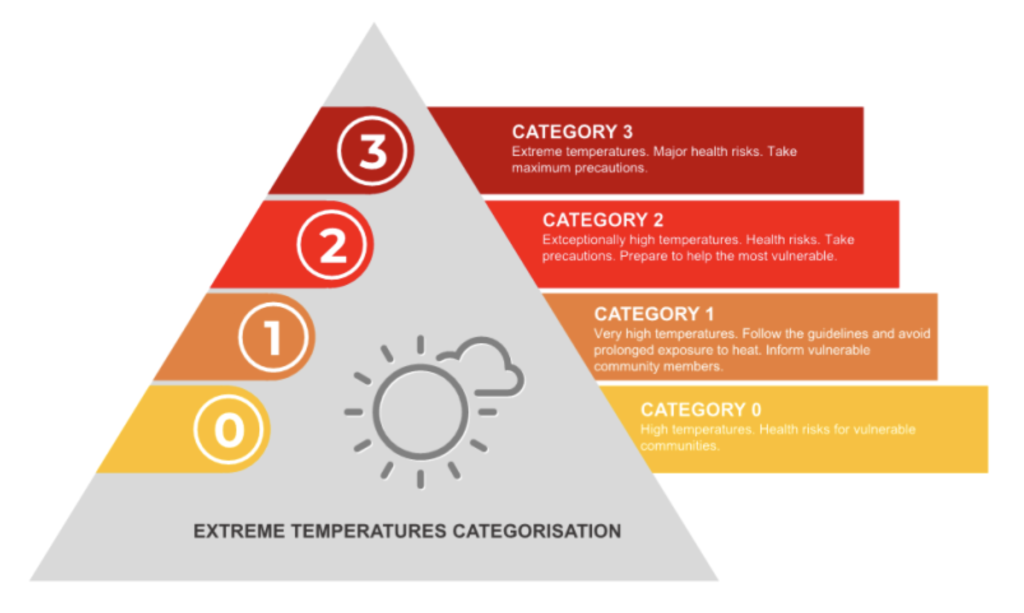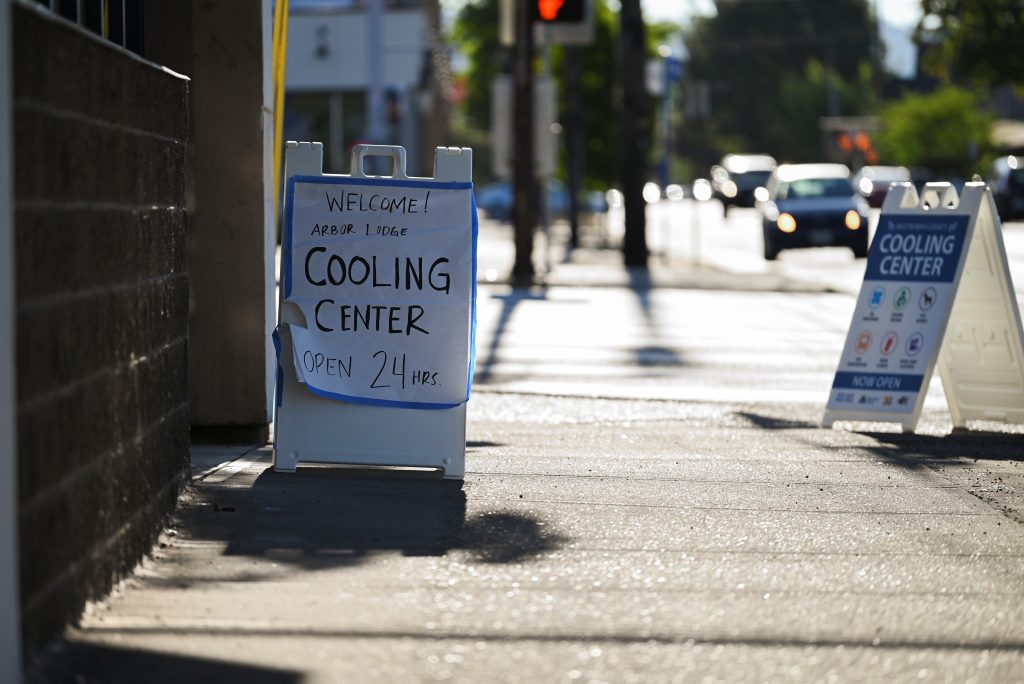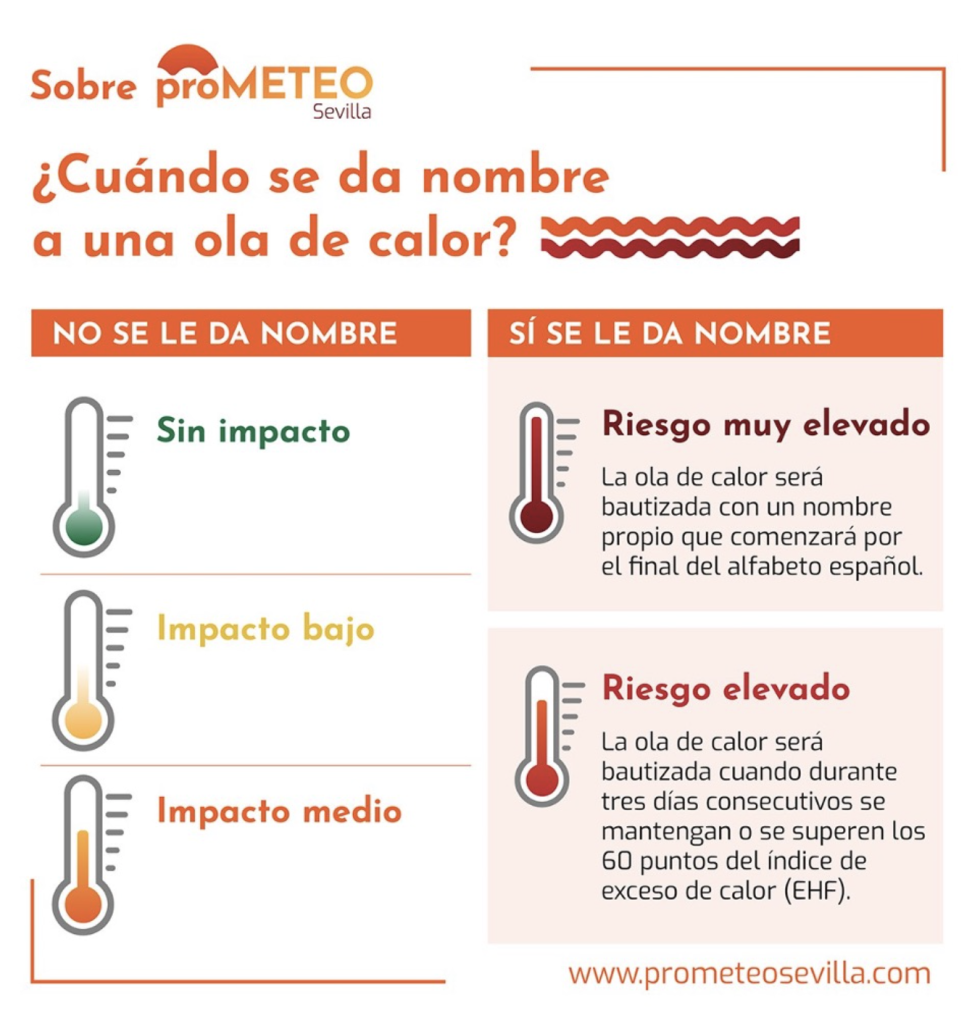How do you categorize a heat wave? A health-based approach to heat resilience
Arsht-Rock’s health-based categorizing and naming system clarifies the dangerous effects of heat by linking community interventions and policies to a tiered category system.
Heat is underestimated. If the human body heats up too quickly, “it doesn’t matter if that heat comes from the outside on a hot day or the inside from a raging fever – you are in big trouble,” writes Jeff Goodell in The Heat Will Kill You First.
Despite the clear health risks, many people do not know how deadly extreme heat can be. By 2050, heat stroke-related deaths are expected to more than double in the United States. As heat waves become more frequent and intense, we need to change the way we prepare for extreme heat events.
To help cities and their residents understand when heat becomes dangerous, Arsht-Rock works with international partners to pilot data informed, health-based early warning systems that categorize and name heat waves. These systems enable local authorities to better communicate the anticipated threat level, increase the flexibility of their emergency response, and highlight the health-related consequences of heat waves. In turn, communities know what to expect and how to stay safe when the temperature rises.
How does a health-based early warning system work?
Unlike other heat warning systems that rely solely on meteorological variables, Arsht-Rock’s health-based early warning system for heat waves is underpinned by an algorithm that considers not only how hot it will be, but also how dangerous those conditions will be to human health. Our innovative system categorizes and names heat waves based on a number of factors, including:
The humidity
If humidity is high, it can be more difficult for people to cool down because sweat cannot evaporate as efficiently.
The nighttime temperatures
“Without relief from the heat at night, heat stress can continue to build and increase the risk of heat illnesses and death,” Jonathan Belles wrote for the Weather Channel.
Historical local weather data
The context is especially important when considering how dangerous heat can be because bodies acclimate to heat. If a heat event follows a period of relative cool, people are less prepared for the spike in heat and are more vulnerable.
These factors are just one element of the system. Arsht-Rock and its science panel designed the system to factor in both local historical meteorological and local health data to understand when increases in temperature correlate to increased risk of mortality. By moving beyond the temperature alone, Arsht-Rock’s pilot better predicts when heat can exacerbate pre-existing conditions and cause heat-related illnesses or even death.
The science for the system stays the same across cities, but the system is designed to respond to the local context. It utilizes different formulas that are responsive to each city’s unique urban structure, our Chief Heat Science Advisor for the Extreme Heat Resilience Alliance, Dr. Larry Kalkstein, told Axios.
Importantly, the system is not meant to work against cities’ existing warning systems—which provide critical weather information—but rather to enhance them. Once the system is calibrated for the historical data, the algorithm can be better assess the historical impact of heat on illness and mortality, creating more accurate categories and alerts.
Rapid responses: The example of Athens, Greece
Our health-based categorization system does not simply categorize heat waves. Arsht-Rock also partners with local partners to design a set of triggered protective responses that are informed by the system. Before the system is implemented, we work with city officials to identify and develop appropriate responses for each heat category.

During a lower category heat wave, the system can trigger heat-related communications to the public that give them guidance for staying safe in the heat. A higher category can trigger a more rigorous set of safety measures and policies such as the opening of city pools and water parks, or the activation of a corps of community health workers or volunteers tasked with checking on elderly and other at-risk individuals. The tiered categorization system recognizes that while everyone can be harmed by heat, there are certain factors that can make the heat even more dangerous.
The summer of 2023 made the critical need for proactive responses exceptionally clear. Greece was one of the many countries that sweltered under intense heat in July. For over two weeks, parts of the country experienced rolling heat waves that sent temperatures soaring as high 46°C (115°F), with unusually high nighttime temperatures that gave people little respite from the heat and increased their risk of heat-related illnesses.
These conditions triggered a Level 3 Heat Alert in six cities across the country. The warning was identified through the extreme heat categorization system that Arsht-Rock developed in partnership with the National Observatory of Athens (NOA) and the City of Athens. The EMY, the Greek Meteorological Agency named the heat wave Cleon, showing that other cities and countries are recognizing the importance of naming dangerous heat events.

The categorization system facilitated more efficient allocations of government resources in response to the heat emergency as the official response to the heat wave was swift. The EMY issued an emergency bulletin on the dangerously high predicted temperatures, and the government took measures including opening public cooling spaces, allowing employees in private companies to work remotely, and threatening stiff fines for on any outside work in the afternoon hours. Local governments also worked with stakeholders like the Red Cross to set up ambulances outside of the Acropolis, handing out water and heat awareness pamphlets. Cities like Athens have the dual responsibility to protect not just their residents but also tourists, many of whom can be especially unprepared for extreme temperatures and unaware of the available cooling resources and centers. When temperatures became perilously hot, the government took the additional step of closing the Acropolis and other archaeological sites knowing that many tourists could be especially vulnerable to the dangerous heat.
As Greece’s punishing series of heat waves has illustrated, rapid action is essential when confronted by the deadly threat of extreme heat. Mayors, health officers, and city officials must be able to respond urgently and quickly to mobilize both a short-term response and long-term heat-reduction actions.
Categorizing heat waves to communicate the dangers

“We call it the silent killer because most people don’t understand how dangerous it is,” Global Chief Heat Officer for Arsht-Rock and UN-Habitat Eleni Myrivli explained in a House of Commons Environmental Audit Committee session. “People think of risk when they hear category one, category two, or category three.”
By categorizing heat waves, cities can better communicate how dangerous extreme temperatures are; by naming the most severe heat waves, cities can immediately and clearly signal the danger and threat of the coming heat event. Studies have also shown that naming heat waves can improve communication with the public, bring clarity to the severity of the situation, and foster a culture of preparedness. Furthermore, research indicates that naming heat waves can not only cause people to take additional steps to protect themselves, but also to help or warn others.
By creating clear categories for heat events and linking official protective responses to each one, cities have the potential to prevent unnecessary loss of life. Health-based early warning systems for heat are a powerful tool to help individuals and city officials understand when heat becomes deadly and learn how to better respond to extreme heat to keep themselves and their community safe.


